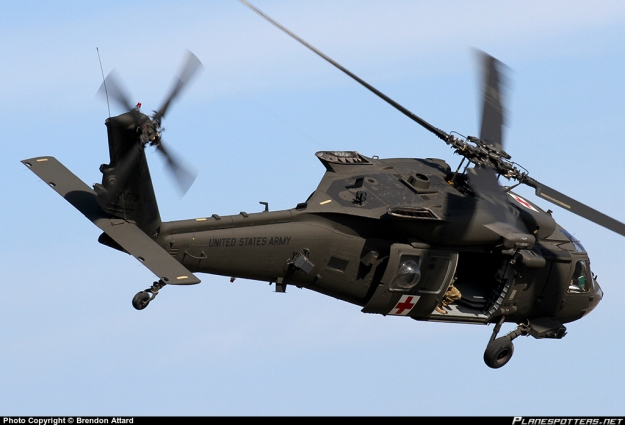Browsing Uh 60 Helicopter Rules and Conformity Demands

Regulatory Framework Overview
The regulative framework regulating UH-60 helicopter operations incorporates a facility collection of standards and regulations developed by air travel authorities. These regulations are made to make certain the efficient and secure operation of UH-60 helicopters in various settings. The Federal Air Travel Administration (FAA) plays a main function in developing and implementing these policies, which cover a wide variety of operational facets, including airworthiness standards, pilot credentials, maintenance needs, and operational treatments.
Compliance with these laws is necessary for helicopter operators to keep the greatest degrees of security and functional integrity. Failing to abide by these laws can result in significant repercussions, consisting of mishaps, injuries, and governing assents. Helicopter operators should remain informed regarding the most current regulatory advancements and make sure that their procedures are in full compliance with all suitable regulations and standards.
Airworthiness Inspections and regulations
Among the regulatory framework governing UH-60 helicopter operations, a crucial focus pushes compliance with Airworthiness Directives and conducting comprehensive evaluations to support security requirements and operational reliability. Airworthiness Directives (Advertisements) are released by aeronautics authorities to attend to dangerous problems in aircraft, including the UH-60 helicopter, and mandate details activities to be taken by owners or drivers. Conformity with ADs is necessary, and failure to stick to these instructions can lead to major repercussions, including grounding of the aircraft.
Routine evaluations are paramount to making certain the airworthiness of UH-60 helicopters. These inspections incorporate a series of checks, from routine day-to-day inspections carried out by pilots before and after flights to much more comprehensive set up maintenance inspections executed by accredited mechanics. Furthermore, special examinations may be required based upon specific problems or occurrences. By sticking to a strict examination program, drivers can find and address possible issues without delay, thus boosting the safety and integrity of UH-60 helicopter operations.
Pilot Credentials and Training

Pilot training for UH-60 helicopters is thorough and covers a broad array of topics, consisting of aircraft systems, emergency check situation procedures, navigating, and mission-specific training. Additionally, pilots go through simulator training to exercise different emergency situation scenarios in a regulated environment. This training assists pilots create the required abilities to handle difficult circumstances effectively.


Furthermore, recurring training and specialist advancement are vital for UH-60 pilots to stay current with the latest laws, modern technology, and finest methods. By investing in pilot credentials and training, drivers can enhance safety, maximize performance, and guarantee conformity with regulative demands in the procedure of UH-60 helicopters.
Functional Limitations and Requirements
Pilot qualifications and training offer as the foundation for recognizing the functional limitations and needs related to UH-60 helicopter operations (uh 60). These functional restrictions are established to ensure the security of the crew, guests, and the aircraft itself. Operational constraints may consist of elements such as weather, weight restrictions, elevation constraints, and operational borders. It is vital for pilots to be well-versed in these restrictions to make informed decisions throughout flight procedures. Additionally, compliance needs, such as adhering to certain flight paths, interaction protocols, and emergency situation treatments, are vital for keeping operational security and governing compliance. Pilots need to remain current with all operational constraints and requirements with normal training, briefings, and evaluates to reduce threats and guarantee secure and reliable UH-60 helicopter procedures. By focusing on adherence to these functional guidelines, pilots can improve the general safety and security and effectiveness of their missions while maintaining governing criteria.
Emergency Procedures and Conformity Screening
Reliable emergency procedures and comprehensive compliance screening are essential parts of keeping operational safety and regulatory adherence in UH-60 helicopter procedures. Emergency situation procedures encompass methods for different situations, including engine failings, why not try here fires, hydraulic problems, and much more. Pilots and crew participants need to be well-versed in these treatments to respond swiftly and effectively in emergency situations. Routine compliance screening guarantees that the helicopter meets all governing requirements established forth by air travel authorities. This testing entails extensive evaluations, checks, and evaluations to verify that the aircraft is airworthy and in conformity with all appropriate laws.
Compliance screening additionally expands to equipment onboard the UH-60, such as interaction systems, navigating instruments, and safety and security gear. Making sure that all tools is functioning properly and fulfills wikipedia reference regulatory requirements is essential for risk-free procedures. In addition, compliance testing might entail simulations of emergency situations to analyze the crew's reaction and the helicopter's efficiency under stress and anxiety. By prioritizing emergency procedures and conformity screening, UH-60 drivers can minimize risks and demonstrate their commitment to security and governing conformity.
Verdict
Finally, adherence to governing structure, conformity with airworthiness instructions, pilot credentials and training, functional constraints, and emergency situation treatments are necessary for browsing the guidelines and demands of operating a UH-60 helicopter. uh 60. It is important for operators to prioritize safety and ensure complete conformity with all suitable guidelines to preserve the airworthiness and operational integrity of the aircraft
Browsing the regulatory landscape surrounding UH-60 helicopter operations requires a nuanced understanding of the intricate internet of policies and conformity needs.Conformity with these regulations is vital for helicopter drivers to maintain the highest possible degrees of safety and security and functional stability.In the middle of the regulatory structure controling UH-60 helicopter operations, a critical focus lies on compliance with Airworthiness Directives and performing detailed evaluations to maintain security standards and operational dependability.Efficient emergency procedures and thorough compliance screening are vital elements of keeping operational safety and security and governing adherence in UH-60 helicopter operations. Normal compliance screening makes sure that the helicopter meets all governing requirements established forth by aviation authorities.